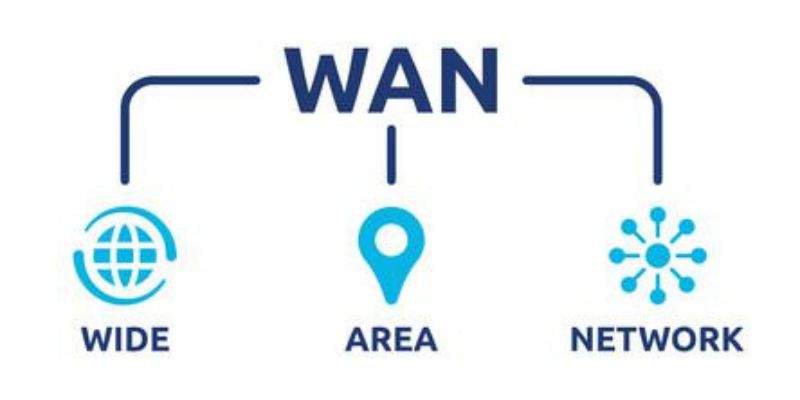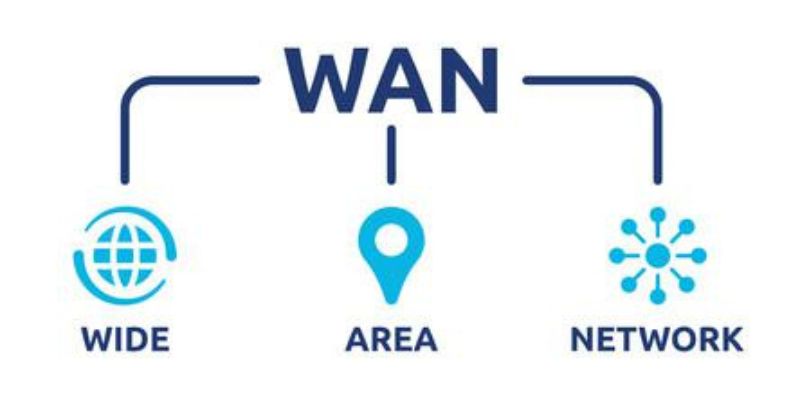
Wide Area Network: Connecting Your Business across the Globe
Jan 31, 2024 By Mark Allen
In today's interconnected world, businesses and organizations rely heavily on technology to communicate and share information. One crucial component of this technological infrastructure is a wide area network (WAN). This article will explore what a WAN is, its benefits, and how it works.
What is a Wide Area Network?
Wide Area Networks (WANs) are computer networks covering a large geographical area, typically spanning multiple cities or countries.
Compared to LANs, WANs have a much larger coverage area and often utilize public telecommunication infrastructure, such as telephone lines or satellite links, to transmit data. It allows for communication between LANs that are physically separated by large distances.
WANs also typically have slower data transfer rates than LANs due to the limitations of the public infrastructure and the longer distances involved.

What is the purpose of the WAN?
The main purpose of a WAN is to connect multiple local area networks (LANs), allowing for communication and data sharing between different locations. Unlike LANs, which are confined to a single building or campus, WANs are designed to connect multiple LANs over long distances.
What are the characteristics of a WAN?
A wide area network (WAN) is a network that spans a large geographical area, connecting multiple local area networks (LANs). Several characteristics define a WAN:
Wide coverage
A WAN covers a large geographic area, ranging from a city to a country or even multiple countries. It allows for communication between different locations that are far apart.
Public or private connectivity
A WAN can be established using public connections, such as the Internet, or private connections, such as leased lines or dedicated circuits. Public connections are more cost-effective but may have limitations in terms of security and reliability.
High-speed connectivity
WANs require high-speed connections to facilitate data transmission over long distances. These can be achieved through fiber optics, satellite links, or microwave connections.
Support for multiple protocols
To ensure compatibility and seamless communication between devices and networks, WANs support various networking protocols, such as TCP/IP.
Centralized management
WANs often have a centralized management system that allows administrators to monitor and control network resources, security measures, and performance across different locations.
Scalability
WANs are designed to accommodate growth and expansion. They can easily add new locations or increase the capacity to handle increased traffic and data volume.
Redundancy and fault tolerance
In case of failures or disruptions, WANs often incorporate redundancy measures, such as backup connections and multiple paths, to ensure uninterrupted connectivity.
Security measures
WANs implement security measures, such as encryption, firewalls, and virtual private networks (VPNs), to protect data transmission and prevent unauthorized access.
Components of a Wide Area Network
A wide area network (WAN) is a network that spans a large geographical area, connecting multiple local area networks (LANs) and allowing for communication between different sites or locations.

Several key components are involved in a WAN that transmits data over long distances.
Routers
One of the main components of a WAN is routers. Routers direct traffic between different networks and determine the most efficient path for data travel. They use routing tables to decide how to forward data packets based on the destination IP address.
Switches
Switches are another important component of a WAN. Switches connect multiple devices within a network, allowing them to communicate with each other. They use MAC addresses to direct data packets to the appropriate device within the network.
Modems
Modems are essential for connecting a WAN to the internet. They convert digital data from a computer into analog signals that can be transmitted over telephone lines or cable lines and vice versa. Modems are used to establish a connection with an internet service provider (ISP) and enable access to the internet.
Transmission media
Transmission media is another key component of a WAN. It refers to the physical medium through which data is transmitted, such as leased lines, fiber optics, or wireless connections. Leased lines are dedicated, private connections between two locations, providing high-speed and reliable data transmission.
Fiber optics use thin strands of glass or plastic to transmit data as pulses of light, allowing for fast and long-distance communication. Wireless connections use radio waves to transmit data over the air, enabling mobility and flexibility in network connectivity.
Network protocols
Network protocols play a crucial role in WANs. The most commonly used protocol in WANs is TCP/IP (Transmission Control Protocol/Internet Protocol). TCP/IP is a protocol suite that governs data transmission and reception over the internet. It ensures that data is divided into packets, addressed correctly, and reassembled at the receiving end.
Wide area network advantages
Wide Area Networks (WANs) offer numerous advantages for businesses and organizations.
One of the main advantages is increased connectivity. WANs allow for the seamless connection of multiple locations, whether they are across town or the globe. It enables efficient communication and collaboration between employees, departments, and branches, improving productivity and decision-making.
Another advantage of WANs is the ability to centralize resources and data. With a WAN, organizations can store and access data from a centralized location, making it easier to manage and secure.
WANs also provide scalability, allowing businesses to easily add or remove locations as needed without significant infrastructure changes.
Challenges faced in implementing and maintaining WANs
Implementing and maintaining WANs can come with its fair share of challenges. One of the main challenges is the cost associated with setting up and managing a WAN. It requires investment in networking equipment, software, and skilled IT personnel.
WAN setup and configuration complexity can also be challenging, especially for organizations without dedicated IT departments. It requires expertise in network design, security protocols, and troubleshooting.
Additionally, WANs are susceptible to latency, bandwidth limitations, and outages, impacting network performance and user experience.
Conclusion
Wide area networks play an essential role in modern business operations by providing reliable connectivity between geographically dispersed locations. With its cost-saving benefits, improved communication capabilities, and enhanced security features, implementing a well-designed WAN can greatly benefit any organization looking to expand its reach beyond local boundaries.
-
 Art Jan 31, 2024
Art Jan 31, 2024Learning About Neo-Romanticism – One of the Best Art Forms
Are you curious to know more about the Neo-Romanticism art movement, this article has everything you need to know.
-
 Health Jan 01, 2024
Health Jan 01, 2024Which Are The Best Times to Drink Water
Find here the seven best times to drink water to boost your mood, balance your body weight, and sharpen your focus
-
 Internet & Telecom Jan 31, 2024
Internet & Telecom Jan 31, 2024Wide Area Network: Connecting Your Business across the Globe
Discover how a wide area network can revolutionize your business operations and connect you with clients.
-
 Entertainment Feb 02, 2024
Entertainment Feb 02, 2024The Grand Slam Experience: Unveiling the Essence of Major League Baseball
Dive into the thrilling world of Major League Baseball (MLB) with our comprehensive guide. Explore the rich history, unique culture, and exciting gameplay that define America's baseball.